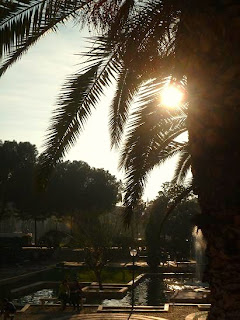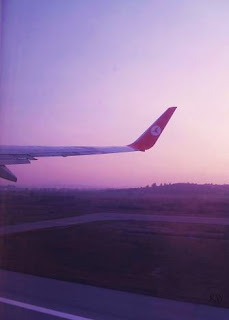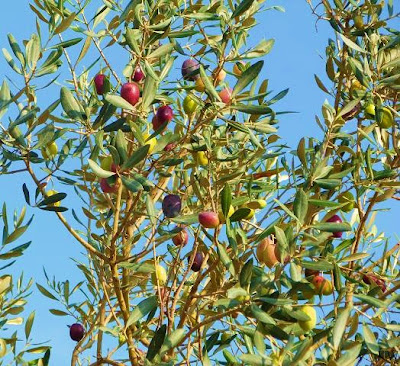Milton Keynes: reflections on the city of reflections .. shining hope for a new social order or soulless space of crass consumerism?
When I first arrived in England almost twenty years ago I stayed a while in the ‘new town’ of Milton Keynes. Although nearly everyone I met was proud of living in this fine gleaming enterprise on the flat plains in the middle of the English countryside with all its modern amenities, I was surprised to discover its overwhelming emphasis on the centralisation of society around a massive shopping complex whose sole purpose seemed to be to invite a continual consumer spending spree in the shape of chain stores and fast food franchises.
Unlike other places in the UK I had lived as a child, this was an engineered city created in experimental manner to house workers from the now crumbling post-industrial northern towns who were moving south in search of job opportunities, and the ‘professional class’ of business people swelling outward from suburbs in London.
I was taken aback by the grid system of roads that, in the style of that intentionally unnamed street network of Salt Lake City (taking Detroit’s mile road markers a step further), went so far as to assign all routes a number and designate each artery as north, south, east or west. Every intersection was linked by roundabouts to maintain the constant traffic flow through the central shopping district and into and out of the housing ‘estates’ concealed behind the purposively designed tree-lined avenues. From the car window it appeared to be a sprawling municipality with no human inhabitants.
Some years later, I returned to live in the city of Milton Keynes. After a while I began to joke that if a person had only six months to live they should move to Milton Keynes, because it will feel like another six years. Unfortunately, for me that seemed to hold true, as life in that intentionally utilitarian sprawl was like a slow, painful and anonymous death. In spite of that, I decided to make a quick stop there while on a recent trip back to the UK, as if to remind myself what it was I had left behind in the dreary grey light.
At the geographical centre of this geometrically calculated conurbation of smoked glass, mirrored monoliths and indistinct rectangular office blocks is situated a leisure palace of arcades and cinemas called ‘The Point’.
When I first encountered this place it was the highest visible structure in the area, a deliberate marker from the M1 motorway that runs past the eastern edge of this interlinked complex of skeletal constructions that has now become a major city in the central southern region. This symbol of the outlandishly indolent inside out architecture that is embedded in this characterless municipality was my initial welcome to the postmodern nightmare that so much of this overly bureaucratic nation has become.
Architect and developer John Portman created the Bonaventure Hotel and Atlanta’s Peachtree Centre, as well as influencing the Hyatt Regency in Baltimore, where I was the in-house disc jockey for several years in the late 80s - developed by James W. Rouse who built the first indoor shopping ‘mall’ in Glen Burnie Maryland in 1958, where I lived while working at the Hyatt, and whose vision helped create the concept of regentrification, particularly the creation of 'new towns' such as Columbia in Maryland and inner-city harbour places like the one in Baltimore that became such a success. Portman also designed the remarkable Renaissance Centre on Detroit‘s riverfront – where I once had the distinctly hedonistic gratification of a long weekend of Kabuki theatre and revolving rooftop restaurants.
These 73 floor-high twin towers of steel and mirrored glass with their people-movers (giant conveyor belts for transporting humans often seen in airports and now becoming popular in shopping centres everywhere, originally used in Disney World) and multi-floored escalators house a magnificent hotel, as well as executive offices and shopping arcades and restaurants (including the one on the top 3 floors accessible by glass elevator that rides up the outside of the tower like a tiny insect climbing a tall tree) and the usual accoutrements that go along with life inside the cityscape of a Wellsian future, or within the artificial bubble of the present.
These 73 floor-high twin towers of steel and mirrored glass with their people-movers (giant conveyor belts for transporting humans often seen in airports and now becoming popular in shopping centres everywhere, originally used in Disney World) and multi-floored escalators house a magnificent hotel, as well as executive offices and shopping arcades and restaurants (including the one on the top 3 floors accessible by glass elevator that rides up the outside of the tower like a tiny insect climbing a tall tree) and the usual accoutrements that go along with life inside the cityscape of a Wellsian future, or within the artificial bubble of the present.
Frederic Jameson wrote a wonderful article examining the impact of these colossal feats upon the fabric of city life and their influence on thinking about the way we interact in these new spaces – these total environments. Coated in mirrored glass skins, Jameson suggests, “when you seek to look at the hotel’s outer walls you cannot see the hotel itself, but only the distorted images of everything that surrounds it.” What Jameson calls the ‘postmodern hyperspace’ is being replicated all over the world, and is most especially visible (or more accurately ‘invisible’) in the entirely simulated city of Milton Keynes.
Although much has happened in my own life since then, this new town has only continued to develop and grow in the same manner it started out, encompassing all the surrounding area in its relentless shining glass, concrete and metal expansion, turning the region into a massive reflection of its own pointlessly self-important ambiguity. This is a place without organic historical context – it grew from a need to find purposeful occupation and housing for displaced people that had lost meaning in their existence following the Thatcher years of financial cuts with the loss of associated jobs in manufacturing, and social disenfranchisement of the workers who had made the country a hub of industry.
Instead of growing from an old-fashioned market town where traders, craftspeople and farmers came to sell their wares, it developed as a conscious plan to integrate a multiple strategy of builders and investors with the underemployed, government land rights allowances and highly lucrative overflow sector of bankers and commercial designers.
It took many years of building shopping malls and warehouse distribution centres before the idea of theatres and galleries came into mind (it was many years before the idea of a central church or ‘cathedral’ was considered – and when it was, although a cross sits atop its dome, the official name was that of a ‘multi-faith centre’). When it did, these art houses didn’t grow naturally, instead another planned centre wherein everything would be contained in one district was designed (against much critical scorn the gallery at least dared to open with an exhibition of Gilbert and George work) as another way to induce the people toward consumption.
It took many years of building shopping malls and warehouse distribution centres before the idea of theatres and galleries came into mind (it was many years before the idea of a central church or ‘cathedral’ was considered – and when it was, although a cross sits atop its dome, the official name was that of a ‘multi-faith centre’). When it did, these art houses didn’t grow naturally, instead another planned centre wherein everything would be contained in one district was designed (against much critical scorn the gallery at least dared to open with an exhibition of Gilbert and George work) as another way to induce the people toward consumption.
A few places had already been operating independently on the fringes of the town, but once the developers saw the opportunity they created an area that once again overshadowed true grass-roots entrepreneurial insight, and everything turned to poured concrete and glass in another shadow play of idealised reality.
These Westfield shopping centres that are currently springing up around England, and American-style mega-malls such as Lakeside and Bluewater, intentionally create the appearance of consumer busyness while removing the perception of location and historical context, with their people-movers and interior gardens they suppress familiarity of the real and replace nature with artificial experience. They give the impression of clean and healthy environments yet with their factory produced air and greenhouse grown plants they are only the simulated practice of mass conditioning to a future without humanity.

So many of Milton Keynes’s city centre facades are glazed in mirrored glass, it is easy for individuality and character to vanish in the fragmented sense of spatial detachment. Lacking reference, people are lost in a hall of mirrors, surrounded by the growing complexity of consumer products and choices that remove imagination and replace it with standardised conformity.
The view these edifices yield to the eye is a reflection of the exterior of the building across the street, it too with a mirrored surface reflecting back the image of itself as seen in the opposite office block. This continual dialogue of emptiness referencing nothingness underlies the very fabric of existence in this city – an unimaginative recreation of reflective surfaces that replicates the shallow banality of life without history or raw culture; a continuous one-dimensional state of interaction without meaning.
The inside is outside and the outside exists as a parking area for the people to arrive at the fishbowl world of mirrors that reveal the interior as fathomless and a pointless vacuous shell. The metallic skin of this artificial landscape shines in the cold winter sunlight as another reflective surface offering limited opportunity for internalisation of significance – it is better to see the self from outside than explore personality within; style wins out over substance, and today’s fashion is a blank slate staring in a dark mirror.
 Of course, during my visit there were a few first-class moments thrown in for good measure. I did see people I wanted to catch up with (though a few people I really wanted to meet with will have to wait till next time – apologies!), enjoyed entertainment I’d missed, and picked up a couple good books in English - though not amongst this superficial little collection of trash (as if these people don't get enough air time without pulping trees to transcribe their babble).
Of course, during my visit there were a few first-class moments thrown in for good measure. I did see people I wanted to catch up with (though a few people I really wanted to meet with will have to wait till next time – apologies!), enjoyed entertainment I’d missed, and picked up a couple good books in English - though not amongst this superficial little collection of trash (as if these people don't get enough air time without pulping trees to transcribe their babble).There were terrific homemade curries, and thanks to an Indian neighbour an authentic meal that really made me feel special. I did have my night at the pub with friends and savoured the satisfaction of real British ale – one of the sincere delights I had missed. Of course, it was a genuine pleasure to visit places I had not been for some time and touch base with friends and family to share laughter, good food and fine wine and tell tales of adventure.
We need narratives to guide us through the journey of life, to remind us who we were, who we are, to provide reference in a chaotic world where signs and symbols are in constant exchange and value is constantly debatable. It is this story of life that gives hope and encouragement to continue along the path that leads to a better tomorrow.
As Jameson writes it [postmodern hyperspace], “has finally succeeded in transcending the capacities of the individual human body to locate itself, to organise its immediate surroundings perceptually, and cognitively to map its position in a mappable external world.” This removal of the map, this decentring of mind amongst the signs and symbols that mark the way from here to there and back again, is mirrored in our technology and communication that serves to distance us from each other as subjects in our own world.
As Jameson writes it [postmodern hyperspace], “has finally succeeded in transcending the capacities of the individual human body to locate itself, to organise its immediate surroundings perceptually, and cognitively to map its position in a mappable external world.” This removal of the map, this decentring of mind amongst the signs and symbols that mark the way from here to there and back again, is mirrored in our technology and communication that serves to distance us from each other as subjects in our own world.
I am a person who desires genuine contact and interaction, who believes in the stories and songs and wonder of life that connect us one to another in the great play of experience – I seek exploration knowing what I take beyond this life, if anything, will exist as mind or spirit, not as things.
 I travel hopefully, in anticipation of enjoyable times and further knowledge of the world, to create a story, to live the narrative, to see within and beyond the expression of self. The sunshine and kindness of a more southerly locale is calling once again, and I look forward to returning to the vitality of life in a friendlier environment.
I travel hopefully, in anticipation of enjoyable times and further knowledge of the world, to create a story, to live the narrative, to see within and beyond the expression of self. The sunshine and kindness of a more southerly locale is calling once again, and I look forward to returning to the vitality of life in a friendlier environment.I know the sorrow of someone leaving, the pain of being left; I know there is always a sense of having been left behind while others move on, for I have experienced it many times. We do not make those choices for others, no matter how close, and can only respect the decisions they make as right for their lives at that time. However, I know in my heart I will ever wait for those who care, and keep the love alive for those who have touched me along the road that is this great journey of life.
The sun is rising to warm the Mediterranean as spring approaches, and I know that someone somewhere is seeking a smile that echoes hopeful guidance from the twinkling light of the stars. As two individuals seeing eye to eye in meditative purpose are like two mirrors that penetrate deep into the soul of each other through an honest understanding, we see the substance of union as a referential reminder that all in this world are connected; a oneness, rather than a meaningless simulacrum of insignificant reflection that merely glides over the surface as shining gloss on the exterior of separate lives.
As I head to the edge of the map once again, following my heart on new voyages to encounter other lands, I sense happiness in my soul, for I know the truth of existence is in discovering the reality of the authentic spirit of life.
As I head to the edge of the map once again, following my heart on new voyages to encounter other lands, I sense happiness in my soul, for I know the truth of existence is in discovering the reality of the authentic spirit of life.
* * *
































